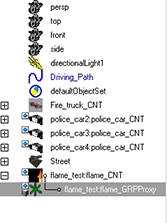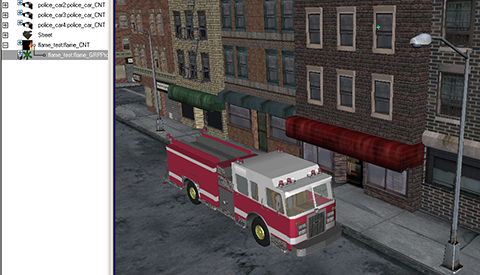With so many new additions to the scene, you may notice the interactive performance slowing down. You can speed up your scene by using proxy containers.
A proxy is an object that stands in a scene for another, more complex object. Proxy objects allow you to quickly switch between complex and simple representations of an object in your scene. They are useful for temporarily reducing the complexity of the scene as you work with it.
Since container-centric selection is on, this selects the fire’s container.
Now you can load the proxy to represent the container.
The police car disappears and a locator appears in its place.
The container for your fire still appears in the Outliner, however if you expand it, only a single locator node appears (instead of the fire’s group node).

Likewise, the fire in your scene has been replaced with a locator node. Your interaction with this container has not changed, you can still assign values to the published attributes and move the locator around the scene. When you reload the proxy container again, the fire reflects those changes. However, if you play the scene when the proxy container is active, the scene playback is much faster.
